|
Tai Chi
|
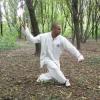 Tai chi (taiji), short for T'ai chi ch'üan, or Taijiquan (pinyin: tàijíquán; 太极拳), is an internal Chinese martial art practiced for both its defense training and its health benefits. The term taiji refers to a philosophy of the forces of yin and yang, related to the moves. Though originally conceived as a martial art, it is also typically practiced for a variety of other personal reasons: competitive wrestling in the format of pushing hands (tui shou), demonstration competitions and achieving greater longevity. As a result, a multitude of training forms exist, both traditional and modern, which correspond to those aims with differing emphasis. Some training forms of tàijíquán are especially known for being practiced with relatively slow movements. Tai chi (taiji), short for T'ai chi ch'üan, or Taijiquan (pinyin: tàijíquán; 太极拳), is an internal Chinese martial art practiced for both its defense training and its health benefits. The term taiji refers to a philosophy of the forces of yin and yang, related to the moves. Though originally conceived as a martial art, it is also typically practiced for a variety of other personal reasons: competitive wrestling in the format of pushing hands (tui shou), demonstration competitions and achieving greater longevity. As a result, a multitude of training forms exist, both traditional and modern, which correspond to those aims with differing emphasis. Some training forms of tàijíquán are especially known for being practiced with relatively slow movements.
Today, tai chi has spread worldwide. Most modern styles of tai chi trace their development to at least one of the five traditional schools: Chen, Yang, Wu (Hao), Wu and Sun. All of the former, in turn, trace their historical origins to Chen Village.
Author - CYBERMED LIFE NEWS
Hits - 418 Synonyms -
Taijiquan
|
|
TENS
|
.png) Transcutaneous electrical nerve stimulation (TENS or TNS) is the use of electric current produced by a device to stimulate the nerves for therapeutic purposes. TENS, by definition, covers the complete range of transcutaneously applied currents used for nerve excitation although the term is often used with a more restrictive intent, namely to describe the kind of pulses produced by portable stimulators used to treat pain. The unit is usually connected to the skin using two or more electrodes. A typical battery-operated TENS unit is able to modulate pulse width, frequency and intensity. Generally TENS is applied at high frequency (>50 Hz) with an intensity below motor contraction (sensory intensity) or low frequency (<10 Hz) with an intensity that produces motor contraction. While the use of TENS has proved effective in clinical studies, there is controversy over which conditions the device should be used to treat. Transcutaneous electrical nerve stimulation (TENS or TNS) is the use of electric current produced by a device to stimulate the nerves for therapeutic purposes. TENS, by definition, covers the complete range of transcutaneously applied currents used for nerve excitation although the term is often used with a more restrictive intent, namely to describe the kind of pulses produced by portable stimulators used to treat pain. The unit is usually connected to the skin using two or more electrodes. A typical battery-operated TENS unit is able to modulate pulse width, frequency and intensity. Generally TENS is applied at high frequency (>50 Hz) with an intensity below motor contraction (sensory intensity) or low frequency (<10 Hz) with an intensity that produces motor contraction. While the use of TENS has proved effective in clinical studies, there is controversy over which conditions the device should be used to treat.
Author - CYBERMED LIFE NEWS
Hits - 456 Synonyms -
Transcutaneous electrical nerve stimulation
|
|
Tepid Sponging
|
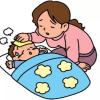 Tepid Sponging: Cold sponging and tepid water sponging are the procedures use cooling properties of water to bring down temperature in the fever. Apart from the difference in temperature of the water used, both procedures essentially are same. Cold sponging is not preferred now a days and tepid sponging is done to control the fever. Both the terms are used interchangeably in the clinical practice. Tepid Sponging: Cold sponging and tepid water sponging are the procedures use cooling properties of water to bring down temperature in the fever. Apart from the difference in temperature of the water used, both procedures essentially are same. Cold sponging is not preferred now a days and tepid sponging is done to control the fever. Both the terms are used interchangeably in the clinical practice.
Author - CYBERMED LIFE NEWS
Hits - 236
|
|
The Presence of Plants
|
 The Presence of Plants: When it comes to sprucing up your house and health, spending a little green on greens can go a long way. It’s not just about improving your indoor aesthetic. Even if you don’t normally notice a plant’s presence, seeing a plant can subconsciously make you feel calm and relaxed. The Presence of Plants: When it comes to sprucing up your house and health, spending a little green on greens can go a long way. It’s not just about improving your indoor aesthetic. Even if you don’t normally notice a plant’s presence, seeing a plant can subconsciously make you feel calm and relaxed.
A lot of research has gone into the benefits of plants and human health. Studies have mixed results about the benefits, ranging from increased productivity in the workplace to only benefits for men or women. But none of these studies have found evidence of negative outcomes to having indoor plants.
In many cases, it’s recommend to have one potted plant per 100 square feet to feel the benefits. Or you can get plants tailored to your needs, like removing formaldehyde from the air.
Author - CYBERMED LIFE NEWS
Hits - 570 Synonyms -
Plants
|
|
Therapeutic Breathing
|
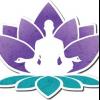 Our breath is a combination of body, mind and soul. Many blockades are set up throughout our life, which prevent true experiences of our real life. The breathing therapy is a form of enhanced respiration, which solves the blockades and clears our inner core. With the help of the therapeutic breathing, we are able to reach clarity, energy and joy in our lives. Our breath is a combination of body, mind and soul. Many blockades are set up throughout our life, which prevent true experiences of our real life. The breathing therapy is a form of enhanced respiration, which solves the blockades and clears our inner core. With the help of the therapeutic breathing, we are able to reach clarity, energy and joy in our lives.
Author - CYBERMED LIFE NEWS
Hits - 171
|
|
Therapeutic Holding
|
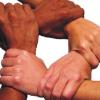 Therapeutic Holding: The concept of holding was first introduced by a British paediatrician and psycho-analyst called Donald Winnicott. In his eyes holding is based on the physical relation between a mother and her child. A child does, or doesn’t, feel safe in its mother’s arms. The arms are presumed to be a prolonging of the developing foetus held in the uterus. Winnicott has enlarged holding to the total emotional and physical environment created by the mother, and the mother’s capacity to hold the child in her thoughts and react intuitively on the needs of her child. Therapeutic Holding: The concept of holding was first introduced by a British paediatrician and psycho-analyst called Donald Winnicott. In his eyes holding is based on the physical relation between a mother and her child. A child does, or doesn’t, feel safe in its mother’s arms. The arms are presumed to be a prolonging of the developing foetus held in the uterus. Winnicott has enlarged holding to the total emotional and physical environment created by the mother, and the mother’s capacity to hold the child in her thoughts and react intuitively on the needs of her child.
By doing this, the mother expresses her love, concern, acceptance and interest in the child. Based on the safety the child experiences in being held by the mother or a nursing environment, the child starts to see itself different from his mother and discovers itself and the world. The child also knows that the mother will be there for him if he needs it, and he learns not to have constant contact with the mother. This enables the child to experience even more.
Winnicott finds the development of a “true” or “false self” in the child really important. This seems to be the result of the child constantly having to accomplish the mother’s needs and just recognising and expressing parts of himself that are accepted by the mother. The essence of holding is not the material but the emotional environment. It is the reliability of our presence and our recognition of who the person is and what he feels. Via communication with our clients and through trials to put their experiences, feelings and views as to who they are in relation to us in words, they feel held.
Author - CYBERMED LIFE NEWS
Hits - 254
|
|
Thermography
|
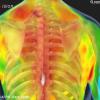 Thermography: Infrared thermography (IRT), thermal imaging, and thermal video are examples of infrared imaging science. Thermographic cameras usually detect radiation in the long-infrared range of the electromagnetic spectrum (roughly 9,000–14,000 nanometers or 9–14 µm) and produce images of that radiation, called thermograms. Since infrared radiation is emitted by all objects with a temperature above absolute zero according to the black body radiation law, thermography makes it possible to see one's environment with or without visible illumination. The amount of radiation emitted by an object increases with temperature; therefore, thermography allows one to see variations in temperature. When viewed through a thermal imaging camera, warm objects stand out well against cooler backgrounds; humans and other warm-blooded animals become easily visible against the environment, day or night. As a result, thermography is particularly useful to the military and other users of surveillance cameras. Thermography: Infrared thermography (IRT), thermal imaging, and thermal video are examples of infrared imaging science. Thermographic cameras usually detect radiation in the long-infrared range of the electromagnetic spectrum (roughly 9,000–14,000 nanometers or 9–14 µm) and produce images of that radiation, called thermograms. Since infrared radiation is emitted by all objects with a temperature above absolute zero according to the black body radiation law, thermography makes it possible to see one's environment with or without visible illumination. The amount of radiation emitted by an object increases with temperature; therefore, thermography allows one to see variations in temperature. When viewed through a thermal imaging camera, warm objects stand out well against cooler backgrounds; humans and other warm-blooded animals become easily visible against the environment, day or night. As a result, thermography is particularly useful to the military and other users of surveillance cameras.
Author - CYBERMED LIFE NEWS
Hits - 170 Synonyms -
Infrared thermography (IRT)
|
|
Traditional Chinese Medicine
|
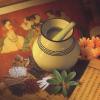 Traditional Chinese medicine (TCM; simplified Chinese: 中医; traditional Chinese: 中醫; pinyin: Zhōngyī) is a style of traditional medicine built on a foundation of more than 2,500 years of Chinese medical practice that includes various forms of herbal medicine, acupuncture, massage (tui na), exercise (qigong), and dietary therapy, but recently also influenced by modern Western medicine. TCM is widely used in Greater China (where it has long been the standard system of medicine), and is becoming increasingly popular and recognized worldwide (where it is primarily approached as alternative medicine). Traditional Chinese medicine (TCM; simplified Chinese: 中医; traditional Chinese: 中醫; pinyin: Zhōngyī) is a style of traditional medicine built on a foundation of more than 2,500 years of Chinese medical practice that includes various forms of herbal medicine, acupuncture, massage (tui na), exercise (qigong), and dietary therapy, but recently also influenced by modern Western medicine. TCM is widely used in Greater China (where it has long been the standard system of medicine), and is becoming increasingly popular and recognized worldwide (where it is primarily approached as alternative medicine).
One of the basic tenets of TCM is that "the body's vital energy (ch'i or qi) circulates through channels, called meridians, that have branches connected to bodily organs and functions." Concepts of the body and of disease used in TCM reflect its ancient origins and its emphasis on dynamic processes over material structure, similar to European humoral theory. Scientific investigation has not found histological or physiological evidence for traditional Chinese concepts such as qi, meridians, and acupuncture points. The TCM theory and practice are not based upon scientific knowledge, and there is disagreement between TCM practitioners on what diagnosis and treatments should be used for any given patient. The effectiveness of Chinese herbal medicine remains poorly researched and documented. There are concerns over a number of potentially toxic plants, animal parts, and mineral Chinese medicinals. There are also concerns over illegal trade and transport of endangered species including rhinoceroses and tigers, and the welfare of specially farmed animals including bears. A review of cost-effectiveness research for TCM found that studies had low levels of evidence, but so far have not shown benefit outcomes. Pharmaceutical research has explored the potential for creating new drugs from traditional remedies, with few successful results. A Nature editorial described TCM as "fraught with pseudoscience", and said that the most obvious reason it hasn't delivered many cures is that the majority of its treatments have no logical mechanism of action. Proponents propose that research has so far missed key features of the art of TCM, such as unknown interactions between various ingredients and complex interactive biological systems.
The doctrines of Chinese medicine are rooted in books such as the Yellow Emperor's Inner Canon and the Treatise on Cold Damage, as well as in cosmological notions such as yin-yang and the five phases. Starting in the 1950s, these precepts were standardized in the People's Republic of China, including attempts to integrate them with modern notions of anatomy and pathology. In the 1950s, the Chinese government promoted a systematized form of TCM.
While health is perceived as the harmonious interaction of these entities and the outside world, disease is interpreted as a disharmony in interaction. TCM diagnosis aims to trace symptoms to patterns of an underlying disharmony, by measuring the pulse, inspecting the tongue, skin, and eyes, and looking at the eating and sleeping habits of the person as well as many other things.
Author - CYBERMED LIFE NEWS
Hits - 655 Synonyms -
TCM
|
|
Traditional Japanese Diet
|
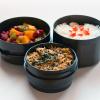 Traditional Japanese Diet: The Japanese enjoy one of the longest life spans in the world -- in part because a traditional diet is comprised of fresh, unprocessed foods. In addition to eating healthfully, the Japanese also have different attitudes toward food than many Americans. In Okinawa, for instance, residents practice "hara hachi bu" or eight parts of 10: They stop eating when they are 80 percent full. Experiment with Japanese recipes in your own kitchen and adopt smaller portion sizes for a healthier diet. Traditional Japanese Diet: The Japanese enjoy one of the longest life spans in the world -- in part because a traditional diet is comprised of fresh, unprocessed foods. In addition to eating healthfully, the Japanese also have different attitudes toward food than many Americans. In Okinawa, for instance, residents practice "hara hachi bu" or eight parts of 10: They stop eating when they are 80 percent full. Experiment with Japanese recipes in your own kitchen and adopt smaller portion sizes for a healthier diet.
Author - CYBERMED LIFE NEWS
Hits - 299
|
|
Trigger Point Physiotherapy
|
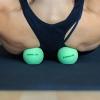 Trigger Point Physiotherapy: Trigger Point Therapy is a form of Remedial Massage Therapy in which direct pressure is applied to specified points on tender muscle tissue to bring about reduction in muscle tension and pain relief. Trigger Point Physiotherapy: Trigger Point Therapy is a form of Remedial Massage Therapy in which direct pressure is applied to specified points on tender muscle tissue to bring about reduction in muscle tension and pain relief.
Author - CYBERMED LIFE NEWS
Hits - 337 Synonyms -
Trigger Point
|
|
Tui na (Chinese manipulative therapy)
|
.jpg) Tui na (Chinese manipulative therapy): Tui na ([tʰwéi.nǎ]; Chinese: 推拿) is a form of Chinese manipulative therapy often used in conjunction with acupuncture, moxibustion, fire cupping, Chinese herbalism, t'ai chi, and qigong. Tui na is a hands-on body treatment that uses Chinese taoist principles in an effort to bring the eight principles of Traditional Chinese Medicine (TCM) into balance. The practitioner may brush, knead, roll, press, and rub the areas between each of the joints, known as the eight gates, to attempt to open the body's defensive chi (Wei Qi) and get the energy moving in the meridians and the muscles. Techniques may be gentle or quite firm. The name comes from two of the actions: tui means "to push" and na means "to lift and squeeze." Other strokes include shaking and tapotement. The practitioner can then use range of motion, traction, with the stimulation of acupressure points. These techniques are claimed to aid in the treatment of both acute and chronic musculoskeletal conditions, as well as many non-musculoskeletal conditions. As with many other traditional Chinese medical practices, there are different schools which vary in their approach to the discipline. It is related also to Japanese massage or anma. Tui na (Chinese manipulative therapy): Tui na ([tʰwéi.nǎ]; Chinese: 推拿) is a form of Chinese manipulative therapy often used in conjunction with acupuncture, moxibustion, fire cupping, Chinese herbalism, t'ai chi, and qigong. Tui na is a hands-on body treatment that uses Chinese taoist principles in an effort to bring the eight principles of Traditional Chinese Medicine (TCM) into balance. The practitioner may brush, knead, roll, press, and rub the areas between each of the joints, known as the eight gates, to attempt to open the body's defensive chi (Wei Qi) and get the energy moving in the meridians and the muscles. Techniques may be gentle or quite firm. The name comes from two of the actions: tui means "to push" and na means "to lift and squeeze." Other strokes include shaking and tapotement. The practitioner can then use range of motion, traction, with the stimulation of acupressure points. These techniques are claimed to aid in the treatment of both acute and chronic musculoskeletal conditions, as well as many non-musculoskeletal conditions. As with many other traditional Chinese medical practices, there are different schools which vary in their approach to the discipline. It is related also to Japanese massage or anma.
In ancient China, medical therapy was often classified as either "external" or "internal" treatment. Tui na was one of the external methods, thought to be especially suitable for use on the elderly population and on infants. In modern China, many hospitals include tui na as a standard aspect of treatment, with specialization for infants, adults, orthopedics, traumatology, cosmetology, rehabilitation, and sports medicine. In the West, tui na is taught as a part of the curriculum at some acupuncture schools.
Author - CYBERMED LIFE NEWS
Hits - 290 Synonyms -
Tui na
|